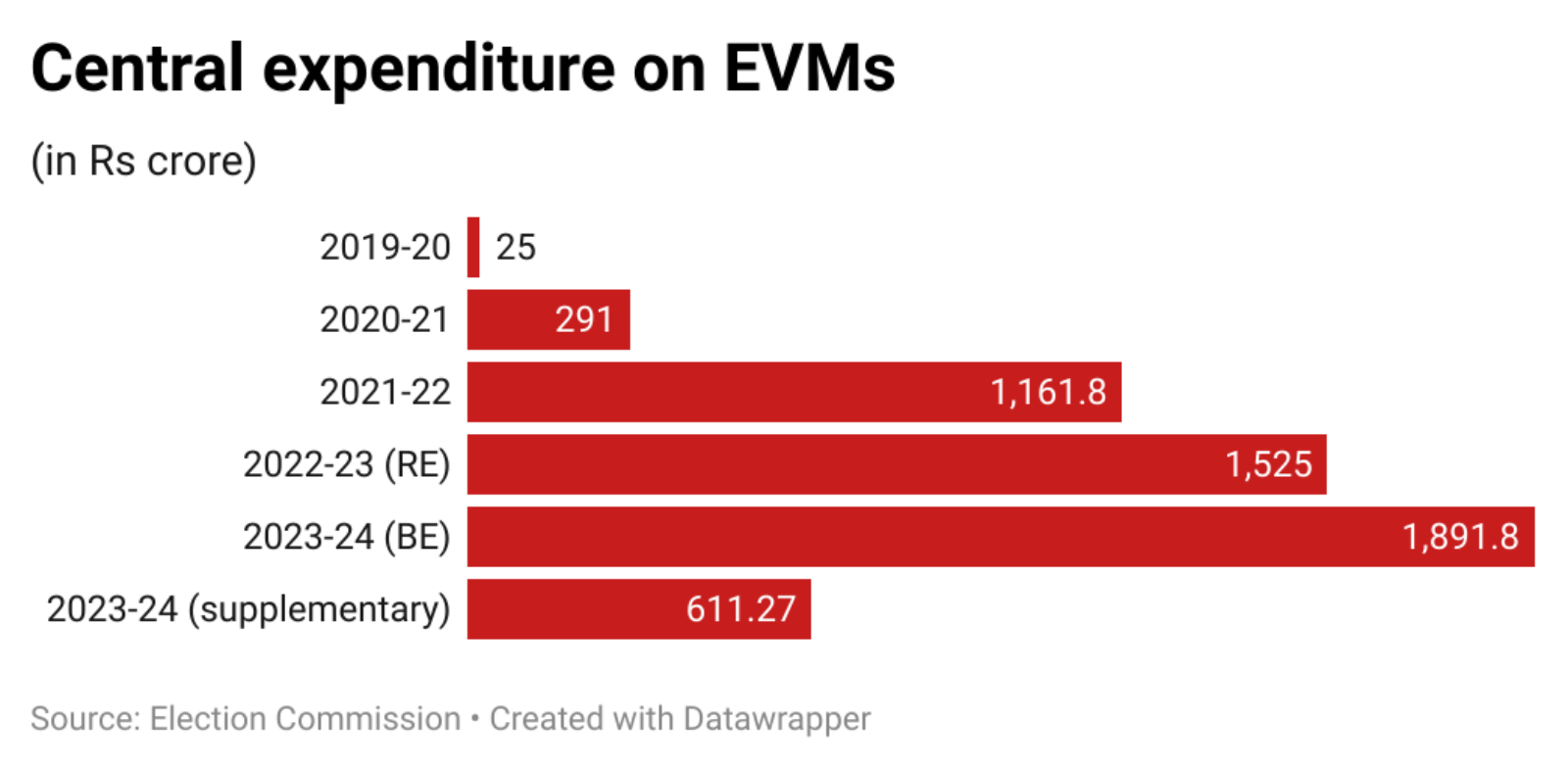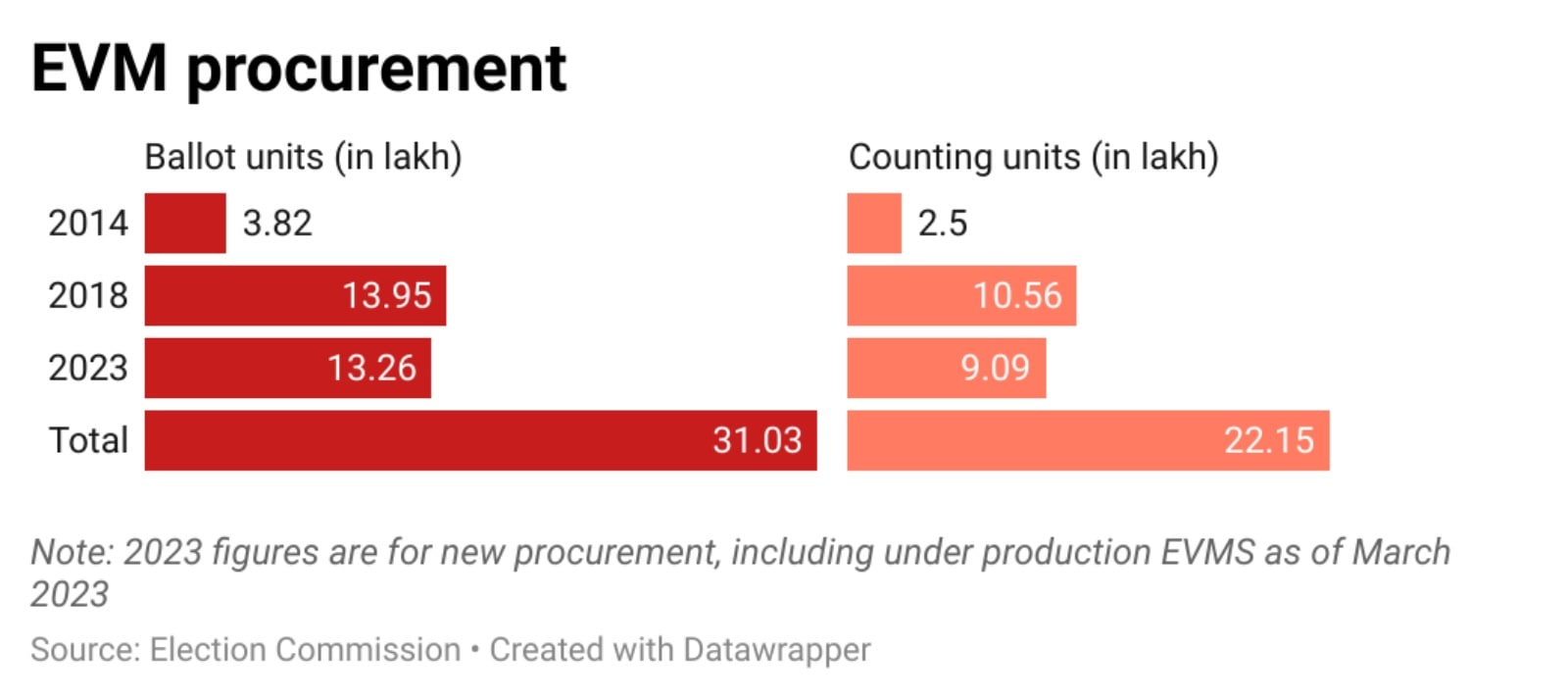What it costs to organise Lok Sabha polls: EVMs to security, breaking down the numbers
As the scale of India’s elections has grown, poll expenditure has kept pace, rising from Rs 10.5 crore in 1952 (17.5 crore voters) to Rs 3,870.3 crore in 2014 (83.4 crore voters).
 It cost an additional Rs 3,147.92 crore for election-related expenditure and Rs 73.67 crore for the Election Commission’s (EC) administration. (Express file photo)
It cost an additional Rs 3,147.92 crore for election-related expenditure and Rs 73.67 crore for the Election Commission’s (EC) administration. (Express file photo)In the ongoing Winter Session of Parliament, Union Finance Minister Nirmala Sitharaman tabled the first batch of supplementary demand for grants for 2023-’24 in the Lok Sabha that included an additional Rs 3,147.92 crore for election-related expenditure and Rs 73.67 crore for the Election Commission’s (EC) administration.
With the Lok Sabha election a few months away, here is a look at how much it costs to conduct the national elections, particularly in procuring electronic voting machines, as the scale of general elections continues to grow with more and more voters, parties, and candidates.
How much Lok Sabha elections cost
From Rs 10.5 crore in 1951 to Rs 3,870.3 crore in 2014, the cost of organising Lok Sabha elections has grown enormously. Meanwhile, India’s electorate has grown more than five times from 17.32 crore in 1952 to 91.2 crore eligible voters in 2019. By the size of the electorate alone, India is the world’s largest democracy.
Barring the 1957 general elections, the cost has gone up in every subsequent poll. Between the 2009 and 2014 Lok Sabha elections, the cost more than tripled from Rs 1,114.4 crore to Rs 3,870.3 crore.
 From Rs 10.5 crore in 1951 to Rs 3,870.3 crore in 2014, the cost of organising Lok Sabha elections has grown enormously. (Express)
From Rs 10.5 crore in 1951 to Rs 3,870.3 crore in 2014, the cost of organising Lok Sabha elections has grown enormously. (Express)
The Central government pays for the elections. The expenses include the Election Commission’s (EC) administrative expenditure for deploying poll workers and armed security personnel, setting up polling booths and procuring electronic voting machines, and running awareness programmes and issuing voter ID cards. The EC, however, has yet to report the cost of the 2019 Lok Sabha polls.
The cost of procuring EVMs
EVMs have been in use in every constituency in general elections since 2004. Since the 2019 Lok Sabha polls were concluded, the expenditure on procuring and maintaining EVMs has consistently risen, particularly in the 2023-’24 Budget. In the first Budget after the election, the Centre allocated Rs 25 crore for EVMs. In the latest Budget, Rs 1,891.8 crore was initially allocated for EVMs, with Sitharaman tabling an additional Rs 611.27 crore demand for grants in the ongoing Winter Session of the House.
While the annual Budget allocates funding directly to the EC, some election-related expenses, including for EVMs, are accounted for under the Ministry of Law and Justice’s Budget.
 EVMs have been in use in every constituency in general elections since 2004. (Express)
EVMs have been in use in every constituency in general elections since 2004. (Express)
As of March 2023, the EC has 31.03 lakh ballot units and 22.15 lakh control units. The ballot unit is the button interface with which voters while the control units connect to ballot units and count the votes.
 EVMs have a lifespan of around 15 years. (Express)
EVMs have a lifespan of around 15 years. (Express)
In 2014, the EC procured 3.82 lakh ballot units and 2.5 lakh control units. Most of these units are still likely to be in circulation since EVMs have a lifespan of around 15 years. In 2018 and 2023, the EC procured additional EVMs amounting to more than 13 lakh ballot units and about 10 lakh control units.
Cost of EC’s administration
The EC’s budget, too, has grown year on year, rising from Rs 236.6 crore the year before the 2019 general elections to Rs 340 crore in the 2023-’24 budget. In the Winter Session, Sitharaman tabled a supplementary demand for grants amounting to Rs 73.7 crore for the agency as it prepares for the coming parliamentary polls. As per Budget documents, the EC staff is estimated to grow from 591 personnel in 2022 to 855 in 2024.
 The EC’s budget, too, has grown year on year. (Express)
The EC’s budget, too, has grown year on year. (Express)
Growing scale of LS polls
The rising cost of conducting the general elections is perhaps unsurprising, considering how they have grown in scale. Not only has the electorate increased considerably, but also the number of candidates, parties, polling booths, and constituencies.
In the 1952 general elections, there were 1,874 candidates from 53 parties contesting in 401 constituencies (including dual member seats) requiring 1.96 lakh polling booths. By 2019, most of these figures had multiplied several times over — with 8,054 candidates from 673 parties in 543 constituencies with 10.37 lakh polling booths.
- 01
- 02
- 03
- 04
- 05































